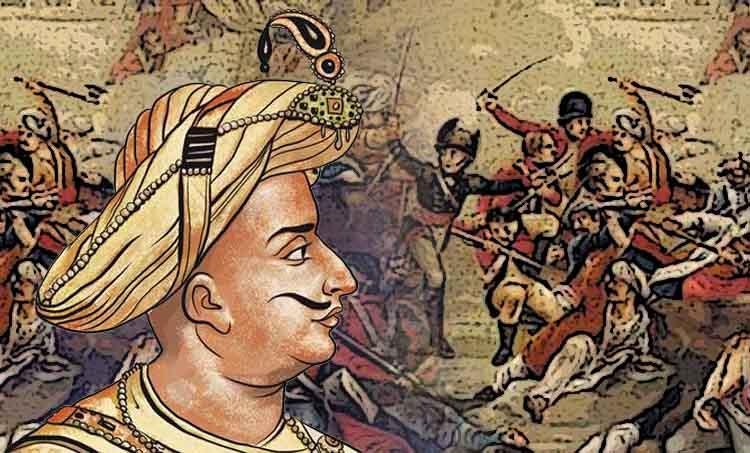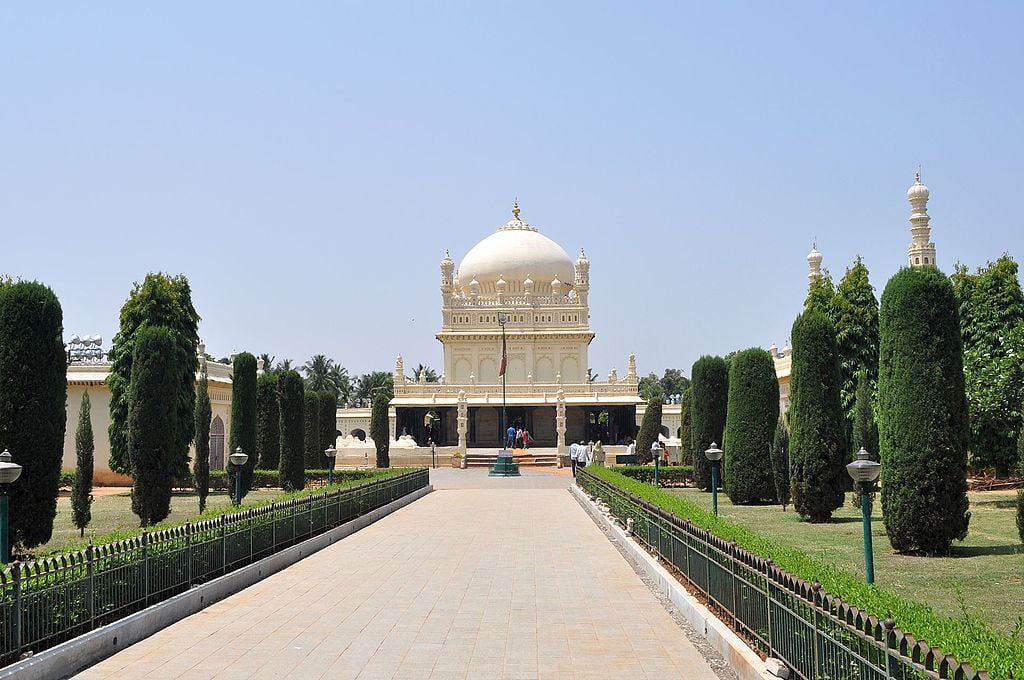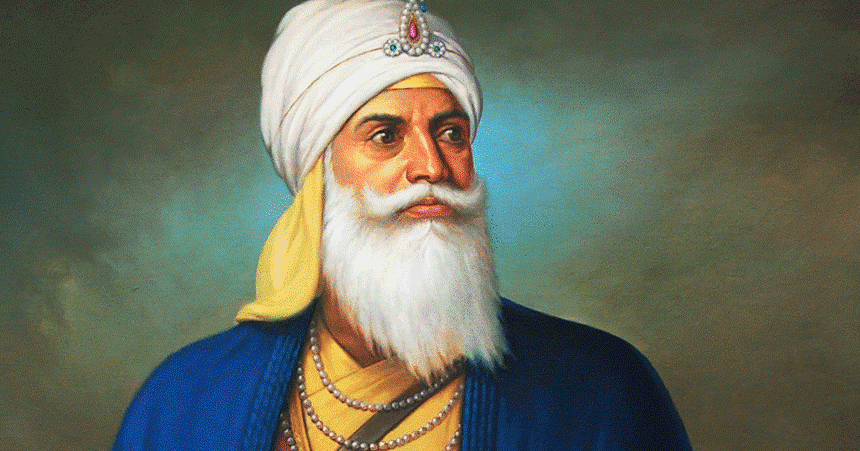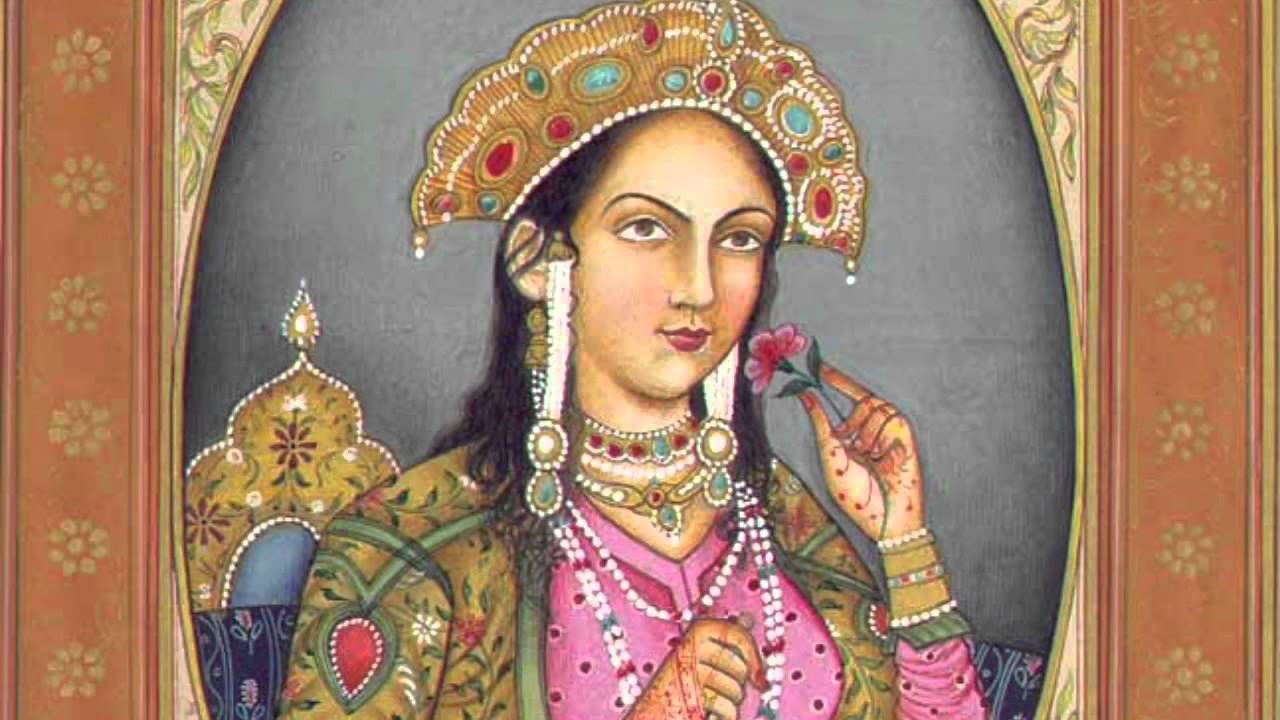Tipu Sultan Biography : History, Family Tree, Reign & Death

Tipu Sultan

| Attribute | Information |
|---|---|
| Full Name | Sultan Fateh Ali Sahab Tipu |
| Born | November 20, 1751 |
| Died | May 4, 1799 |
| Place of Birth | Devanahalli, present-day Karnataka, India |
| Father | Sultan Hyder Ali |
| Title | Sultan of Mysore |
| Known For | Resisting British East India Company |
| Military Tactics | Innovative use of rocket technology in warfare |
| Death | Killed in the Fourth Anglo-Mysore War |
| Moniker | “Tiger of Mysore” |
Tipu Sultan the ruler was a really good king. He won wars, made new rules for running things, and battled against the British East India Company. People also called him the “Tiger of Mysore”.
This blog post will discuss his family, reign, and untimely death. A valiant fighter for independence and sovereignty, whose legacy still faces questioning, will captivate you.
Family Tree
Tipu Sultan Parents
| Name | Role | Relationship to Tipu Sultan |
|---|---|---|
| Hyder Ali | Sultan of Mysore, Military commander | Father |
| Fatima Fakhr-un-Nisa | Queen of Mysore | Mother |
Father: Hyder Ali
- Ethnicity: Sayyid (claiming descent from Prophet Muhammad(PBUH)
- Role: Sultan of Mysore (1761-1782)
- Significance:
- Expanded Mysore’s territory
- Resisted British expansion
- Modernized Mysore’s army
Mother: Fatima Fakhr-un-Nisa
- Ethnicity: Possibly mixed ancestry (Hindu and Turkic)
- Role: Queen of Mysore
- Significance:
- Known for intelligence and political influence
- Supported Hyder Ali’s campaigns
Tipu Sultan Spouse
| Spouse | Year of Marriage | Notes |
|---|---|---|
| Khadija Zaman Begum | 1765 | Tipu’s first wife, daughter of his father’s chief advisor. |
| Ruqayya Banu | 1772 | Daughter of the Nawab of Kadapa. |
| Sahebza Bibi | 1772 | Daughter of Mir Sadiq. |
| Pakiza Begum | 1776 | Daughter of Hyder Ali’s confidante. |
| Firoz Begum | 1776 | Daughter of a general in Hyder Ali’s army. |
| Sindh Sahiba | 1782 | Highly favored wife known for her beauty and intelligence. |
| Pakhtaj Begum | 1782 | Daughter of Hyder Ali’s military commander. |
| Mumtaz Mahal Begum | 1782 | Daughter of a noble family. |
| Bai Khanum | 1784 | Daughter of a Persian family. |
| Taj Bibi | 1785 | Daughter of a governor. |
| Masiti Jan | 1788 | Captive from Coorg. |
Khadija Zaman Begum:
- Sayyid (claiming descent from Prophet Muhammad)
- Daughter of Hyder Ali’s chief advisor
- Significance: Strengthened religious legitimacy of Tipu’s rule
Ruqayya Banu:
- Hindu
- Daughter of Nawab of Kadapa
- Significance: Political alliance between Mysore and Kadapa
Sahebza Bibi:
- Hindu
- Daughter of Mir Sadiq (Tipu’s friend and advisor)
- Significance: Political alliance
Pakiza Begum:
- Sayyid
- Daughter of Hyder Ali’s confidante
- Significance: Educated, active in court life
Firoz Begum:
- Sayyid
- Daughter of Hyder Ali’s general
- Significance: Skilled warrior, archer
Sindh Sahiba:
- Hindu (Sindh region)
- Favored wife, known for beauty and intelligence
- Significance: No specific information available
Pakhtaj Begum:
- Pashtun
- Daughter of Hyder Ali’s military commander
- Significance: Skilled warrior, administrator
Mumtaz Mahal Begum:
- Sayyid
- Daughter of a noble family
- Significance: Devout Muslim, influential in religious affairs
Bai Khanum:
- Shia Muslim
- Daughter of a Persian family
- Significance: Skilled poet, calligrapher
Taj Bibi:
- Sayyid
- Daughter of a governor
- Significance: Skilled administrator, diplomat
Masiti Jan:
- Hindu (Coorg region)
- Captive during Coorg War
- Significance: Unknown
Tipu Sultan Sons
| Son | Year of Birth | Year of Death |
|---|---|---|
| Shahzada Sayyid Shareef Hyder Ali Khan Sultan | 1771 | 1815 |
| Shahzada Sayyid walShareef Abdul Khaliq Khan Sultan | 1782 | 1806 |
| Shahzada Sayyid walShareef Muhi-ud-din Ali Khan Sultan | 1782 | 1811 |
| Shahzada Sayyid walShareef Mu’izz-ud-din Ali Khan Sultan | 1783 | 1818 |
| Shahzada Sayyid walShareef Mi’raj-ud-din Ali Khan Sultan | 1784 | – |
| Shahzada Sayyid walShareef Fatih Hyder Ali Khan Sultan | 1787 | 1800 |
| Shahzada Sayyid walShareef Muzaffar Ali Khan Sultan | 1788 | 1799 |
| Shahzada Sayyid walShareef Ali Jah Khan Sultan | 1792 | 1792 |
| Shahzada Sayyid walShareef Ghaziuddin Ali Khan Sultan | 1794 | 1807 |
| Shahzada Sayyid walShareef Kamruddin Ali Khan Sultan | 1795 | 1799 |
| Shahzada Sayyid walShareef Saifuddin Ali Khan Sultan | 1797 | – |
| Shahzada Sayyid walShareef Sultan | 1799 | 1799 |
1. Shahzada Sayyid Shareef Hyder Ali Khan Sultan:
- Eldest son, significant influence during Tipu’s reign.
- Deported to Calcutta by British after Tipu’s defeat.
2. Shahzada Sayyid walShareef Abdul Khaliq Khan Sultan:
- Accompanied Hyder Ali Khan as hostage to British in 1792.
- Died in Calcutta.
3. Shahzada Sayyid walShareef Muhi-ud-din Ali Khan Sultan:
- Held military position during Tipu’s reign.
- Deported to Calcutta and died there.
4. Shahzada Sayyid walShareef Mu’izz-ud-din Ali Khan Sultan:
- Deported to Calcutta after Tipu’s death.
- Lived longest amongst surviving sons.
5. Shahzada Sayyid walShareef Mi’raj-ud-din Ali Khan Sultan:
- Information scarce, unclear if survived to adulthood.
6. Shahzada Sayyid walShareef Fatih Hyder Ali Khan Sultan:
- Died young at age 13.
7. Shahzada Sayyid walShareef Muzaffar Ali Khan Sultan:
- Killed during the Siege of Seringapatam at age 11.
8. Shahzada Sayyid walShareef Ali Jah Khan Sultan:
- Died as an infant, shortly after birth.
9. Shahzada Sayyid walShareef Ghaziuddin Ali Khan Sultan:
- Died young at age 13.
10. Shahzada Sayyid walShareef Kamruddin Ali Khan Sultan:
- Died during the Siege of Seringapatam at age 4.
11. Shahzada Sayyid walShareef Saifuddin Ali Khan Sultan:
- Information unknown, unclear if survived to adulthood.
12. Shahzada Sayyid walShareef Sultan:
- Died as an infant, shortly after birth.
Family Background
Hyder Ali and Fatima Fakhr-un-Nisa
Tipu Sultan came from an influential family. Hyder Ali, his father, was a military officer and Mysore monarch. This position gave him influence and his kid’s opportunities.
Fatima Fakhr-un-Nisa, Tipu Sultan’s mother, was the daughter of Kadapa’s governor, bolstering the family’s status. With a distinguished pedigree, Tipu Sultan had a solid foundation for his legacy.
An Influential Upbringing
This powerful family educated Tipu Sultan on several topics. He studied combat and governance. He practiced riding, swordsmanship, and military planning. His schooling went beyond these areas.
He deepened his religion by studying the Quran. This diverse education helped him manage leadership problems.
French Connections
Tipu Sultan’s father, Hyder Ali, allied with the French in southern India. Tipu Sultan studied with French officers, a rare chance. This exposure to French military tactics and techniques improved his military talents. French influence shaped Tipu Sultan’s warfare style and battlefield successes.
A Powerful Family Legacy
Tipu Sultan was born into a vital family. His dad was a leader in the military, and his mom was well-known. His family gave him the resources and connections to achieve his dreams.
This set the stage for his ascendancy to the Mysore kingdom and his considerable impact on the region. Tipu Sultan’s family provided the foundation for his exceptional life and achievements.
Early Life and Education
Tipu Sultan was well-educated in several topics in his youth, preparing him for leadership responsibilities. Some highlights of his early life and education:
Hyder Ali and Fatima Fakhr-un-Nisa gave birth to Tipu Sultan in Mysore, India, on November 20, 1750.
- His father, Hyder Ali, was a soldier and later became the leader of Mysore. His mother was the daughter of the governor in Kadapa.
- Riding, swordsmanship, Koranic study, and military strategy were Tipu Sultan’s schooling.
- His dad worked with the French in southern India, so he learned from French officers and got better at military stuff.
- Tipu Sultan commanded 500 cavalry units and five Mysore districts after a victorious military campaign in Malabar at 15.
Tipu Sultan’s childhood and education shaped him into a leader. Military tactics and other subjects equipped him for battlefield challenges. His interaction with French officers enhanced his military skills. These early events shaped his destiny and demonstrated his leadership skills.
Reign and Achievements
| Achievement | Description |
|---|---|
| Rocket Artillery | He expanded the iron-cased Mysorean rockets and deployed them against advances of British forces. |
| Administrative Innovations | He introduced a number of administrative innovations during his rule, including a new coinage system and calendar. |
| Land Revenue System | He introduced a new land revenue system, which initiated the growth of the Mysore silk industry. |
| Channapatna Toys | Tipu Sultan was also introduce Channapatna toys. |
| Military Manual | He commissioned the military manual Fathul Mujahidin. |
| Navy | He built and maintained a navy system consisting of 20 battleships with 72 cannons and 20 frigates with 62 cannons. |
| Foreign Relations | Tipu Sultan get the help of Zaman Shah Durrani, the ruler of the Durrani Empire in Afghan, to defeat both the British and Maratha. |
| Restoration of Sringeri Sharada Mutt | He help to restore the Sringeri Sharada Mutt, which destroyed by Marathas. |
During his reign, Tipu Sultan implemented numerous reforms and achieved great success both administratively and militarily. Here are some key highlights of his accomplishments:
Tipu Sultan did something significant in Mysore. He created new coins and a new calendar system. This initiative helped standardize economic activities and promote trade within the kingdom. The new coinage system facilitated smooth transactions and strengthened the region’s financial stability.
Under Tipu Sultan’s rule, the Mysore silk industry experienced remarkable growth. He actively encouraged silk production and initiated measures to improve the quality of silk and expand its market. This led to a flourishing silk trade, contributing to the overall economic prosperity of the kingdom.
Tipu Sultan’s summer Palace in Bangalore, India, is an Indo-Islamic architecture exemplar and his vacation palace.
Tipu Sultan was an army innovator known for his advanced tactics and effective use of rocket artillery. He developed and deployed rockets in battles against the British East India Company and other neighboring powers. He won important matches, especially in the Second Anglo-Mysore War. People thought he was a good warrior because of his solid military skills.
Tipu Sultan also actively promoted art and culture in Mysore, along with his military and economic achievements. He patronized various art forms, including music, literature, and architecture. This patronage enriched Mysore’s cultural landscape and reflected his vision of a prosperous and culturally vibrant kingdom.
Introduction of New Coinage System and Calendar

To improve Mysore’s administration, Tipu Sultan made significant reforms. A new money system and calendar were essential achievements. This novel approach sought to streamline economic activities and boost kingdom trade. Tipu Sultan created a gold, silver, and copper coin system to standardize currency.
His name and titles were on these “Tipu rupees” representing his power. Tipu Sultan also replaced the Hindu calendar with an Islamic lunar calendar. This transformation strengthened his Muslim origin and Mysore’s Islamic character.
Tipu Sultan’s coinage and calendar reforms stabilized Mysore’s economy, boosting trade and confidence among merchants. The standardized currency attracted investments, fostering economic growth. The new calendar improved governance and reflected Tipu Sultan’s dedication to Islam, influencing the region’s identity.
His innovations impressed the British East India Company, leading to the adoption of his money system in their colonies, highlighting Tipu Sultan’s progressive outlook and lasting impact on economic policies.
Growth of the Mysore Silk Industry

Introduction to the Silk Industry
During Tipu Sultan’s reign, the Kingdom of Mysore witnessed significant growth in its silk industry. This industry played a crucial role in the region’s economic development and symbolized Mysore’s prosperity.
Government Support and Initiatives
Tipu Sultan recognized the potential of the silk industry and took several measures to encourage its growth. He supported silk weavers by offering them financial incentives, access to raw materials, and advanced technology. This support enabled the weavers to produce high-quality silk and compete in domestic and international markets.
Technological Innovations
Under Tipu Sultan’s patronage, the silk industry in Mysore saw remarkable technological advancements. He introduced new techniques for silk cultivation, rearing silkworms, and manufacturing silk fabric. These innovations increased efficiency and productivity, making Mysore silk renowned for its superior quality.
Market Expansion and Trade
Mysore became a silk production and commerce hub as the industry grew. Tipu Sultan actively pushed Mysore silk exports across India and abroad. This business boom brought wealth and prosperity to Mysore, boosting its luxury textile image.
Cultural Significance
The silk industry in Mysore grew a lot. This didn’t just affect money but also changed how things were in the area. The exquisite Mysore silk sarees, known for their intricate designs and vibrant colors, symbolized prestige and elegance.
The silk industry in Mysore gave jobs to lots of people. It helped them make a living and was essential to the community.
Tipu Sultan Palace
Facts about Tipu Sultan’s Palace:
- Tipu Sultan’s Summer Palace, located in Bangalore, India is an example of Indo-Islamic architecture.
- It was the summer residence of the Mysorean ruler Tipu Sultan.
- Hyder Ali commenced its construction within the walls of the Bangalore Fort, and it was completed during the reign of Tipu Sultan in 1791.
- The structure was built entirely of teak and stands adorned with pillars, arches, and balconies.
- It is believed that Tipu Sultan used to conduct his durbar (court) from the eastern and western balconies of the upper floor.
- There are four smaller rooms in the corners of the first floor which were Zenana Quarters.
- The site also holds a painting of the grand throne visualized by Tipu Sultan himself.
- After Tipu Sultan’s death, the British dismantled the throne and auctioned its parts as it was too expensive for a single person to buy whole.
- The rooms in the ground floor have been converted into a small museum showcasing various achievements of Tipu Sultan and his administration.
Timings and Tickets:
- The palace is open from 8:30 am to 5:30 pm from Monday to Sunday.
- The entry fee is ₹15 for Indian citizens, and ₹200 (US$2.50) for foreign visitors.
Military Prowess and Innovation
Tipu Sultan was really good at war and had smart ideas that made him different from other fighters. Let’s look at some important things he did in battles:
– Rocket Artillery: Tipu Sultan was a pioneer in the use of rocket artillery. He developed advanced rockets capable of inflicting significant damage on the enemy. These rockets, known as “Mysorean rockets” had a range of up to two miles and were highly influential in battle.
– Advanced Tactics: Tipu Sultan’s innovative military tactics earned him renown. He used sneaky tactics like surprise attacks and quick getaways to bother and weaken the British soldiers. These tricks helped him make the most of his smaller army and caused big problems for the well-prepared British forces.
– Fortifications: Tipu Sultan was a master at fortifying his strongholds. He made strong forts, like the Fort of Seringapatam. It was really hard for the British soldiers when they tried to take it. These strongholds not only provided strategic advantages but also served as a symbol of Tipu Sultan’s determination and resistance.
– Naval Power: Tipu Sultan recognized the importance of naval power and invested in building a solid navy. He established shipyards and constructed warships, which he used to challenge British dominance in the Arabian Sea. His naval fleet played a crucial role in safeguarding the coastal regions of Mysore and securing trade routes.
Conflicts with the British
| Conflict | Description |
|---|---|
| Second Anglo-Mysore War | He negotiated the 1784 Treaty of Mangalore with them, ending the Second Anglo-Mysore War. |
| Attack on Travancore | In 1789, Tipu Sultan provoked a British invasion by attacking their ally, the raja of Travancore. |
| Third Anglo-Mysore War | Tipu Sultan was forced into the Treaty of Seringapatam, losing a number of previously conquered territories, including Malabar and Mangalore. |
| Fourth Anglo-Mysore War | The British-led forces stormed Seringapatam, Tipu Sultan’s capital, on May 4, 1799, and Tipu died leading his troops in the breach. |
Conflicts with the British East India Company defined Tipu Sultan’s tenure. He fought British army to preserve Mysore’s sovereignty. His actions caused tensions and outright clashes between the two factions.
Tipu Sultan first made peace with the British following the Second Anglo-Mysore War. In 1784, he signed the Mangalore Treaty, ending the war. His subsequent attacks on the Raja of Travancore, a British ally, prompted the British to invade Mysore again.
The Fourth Anglo-Mysore War changed the war. British forces under General Harris besieged Tipu Sultan’s capital, Seringapatam. They took the city on May 4, 1799. British forces outnumbered and defeated Tipu Sultan despite his gallant resistance.
The Kingdom of Mysore fell after Seringapatam fell, ending Tipu Sultan’s reign. His heroic resistance to British colonialism made him a freedom warrior. However, his disputes with the British were complicated and influenced by political alliances and economic interests.
Scholars debate the legacy of Tipu Sultan’s conflicts with the British. Many people see him as a hero for fighting against the British, but some think he was too harsh to his enemies. Examine his legacy in its historical context and from many perspectives.
Death and Legacy
Tipu Sultan died defending Seringapatam. In the Fourth Anglo-Mysore War, he fiercely fought the British but they outnumbered and defeated him. The British captured Seringapatam on May 4, 1799, ending his reign and the Kingdom of Mysore.
Although defeated, Tipu Sultan’s fight against British colonization made him a hero of independence and sovereignty. His refusal to submit to British expansionism and support Mysore’s sovereignty made him a symbol of resistance. He became a legend for fighting for his people’s freedom.
Debaters discuss Tipu Sultan’s legacy. While many admire him as a national hero, others criticize his purported ruthlessness to his opponents. One must analyze the historical context and diverse perspectives to understand his accomplishments. The intricacies of his reign and disputes make it vital to discuss his legacy nuancedly.
Tipu Sultan’s death ended an era and solidified British control in the region. His brave defense of Seringapatam highlights colonial resistance. Tipu Sultan’s story shows freedom fighters’ tenacity and lasting impact on history, whether revered or reviled.
Tipu Sultan Tomb

Facts:
- The tomb is known as Gumbaz and is located in Srirangapatna, India.
- It is a Muslim mausoleum at the center of a landscaped garden, holding the graves of Tipu Sultan (Western Side), his father Hyder Ali (Middle), and his mother Fakhr-Un-Nisa (Eastern Side).
- The Gumbaz was built by Tipu Sultan in 1782-84 to serve as a mausoleum for his parents.
- The mausoleum was surrounded by a cypress garden which is said to have different species of flowering trees and plants collected by Tipu Sultan from Persia, Ottoman Turkey, Kabul, and French Mauritius.
- The original carved doors of the mausoleum have been removed and are now displayed at the Victoria and Albert Museum, London.
- The present doors made of ebony and decorated with ivory were gifted by Lord Dalhousie.
- The Gumbaz is designed in the Persian style, with a large rectangle-shaped garden, having a path leading to the mausoleum.
- The dome is supported by sharply cut black granite pillars.
- The walls inside are painted with tiger stripes, the colors of Tipu Sultan.
- Many of Tipu’s relatives are buried outside the mausoleum in the garden.
Timings and Ticket Prices:
- The tomb is open to visitors from 8:00 am to 6:30 pm on all days of the week.
- There is no entry fee for visiting the tomb or the garden.
- You have to pay a vehicle parking fee of Rs. 30.
Conclusion
The great emperor Tipu Sultan shaped Indian history. Tipu showed courage, ingenuity, and inventiveness from humble beginnings until his reign as Sultan of Mysore. He improved the region’s economy by supporting the silk industry and reforming coinage and calendars.
Tipu’s rocket use and battle strategy showed his military prowess and creativity. Battles with the British brought him down and killed him. However, his bravery and visionary leadership endure. Indian history commemorates Tipu Sultan’s triumphs and sorrows.
FAQ’s
Who was Tipu Sultan?
Tipu Sultan was a prominent ruler of the Kingdom of Mysore in South India during the late 18th century.
What is Tipu Sultan’s family background?
The Haider Ali dynasty, which ruled the Kingdom of Mysore, bore Tipu Sultan. His father, Haider Ali, was a military commander who rose to power in the region.




